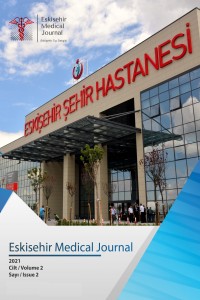Abstract
Introduction: Stevens-Johnson syndrome (SJS) and toxic epidermal necrolysis (TEN) are severe mucocutaneous reactions, triggered by medications. Herein, we first reported a relapse acute myeloid leukemia (AML) patient who developed SJS/TEN syndrome after cefepime (β-lactam antibiotic) use for neutropenic fever.
Case report: A 50-year-old male patient with AML had 25% blast rate at bone marrow biopsy in the twelve months after stem cell transplantation. Due to neutropenic fever, cefepime was started. After one day, ceftazidime was started because of some urticaria like lesions. Desquamation of the body was seen 2 days after ceftazidime. Bullous erythema multiforme/SJS/TEN was considered in the differential diagnosis. Cyclosporine 4 mg/kg per day was started. There was an alleviation in the lesions.
Conclusion: Susceptibility to SJS/TEN has somewhat increased hematological malignancies. Clinicians should be aware of any rashes occurring in the body after any medication, in these patients.
Keywords
References
- 1. Stern RS, Divito SJ. Stevens-Johnson Syndrome and Toxic Epidermal Necrolysis: Associations, Outcomes, and Pathobiology-Thirty Years of Progress but Still Much to Be Done. J Invest Dermatol. 2017 May;137(5):1004–8.
- 2. Sekula P, Dunant A, Mockenhaupt M, et al. Comprehensive survival analysis of a cohort of patients with Stevens-Johnson syndrome and toxic epidermal necrolysis. J Invest Dermatol. 2013 May;133(5):1197–204.
- 3. Mockenhaupt M, Viboud C, Dunant A, et al. Stevens-Johnson syndrome and toxic epidermal necrolysis: assessment of medication risks with emphasis on recently marketed drugs. The EuroSCAR-study. J Invest Dermatol. 2008 Jan;128(1):35–44.
- 4. Halevy S, Ghislain P-D, Mockenhaupt M, et al. Allopurinol is the most common cause of Stevens-Johnson syndrome and toxic epidermal necrolysis in Europe and Israel. J Am Acad Dermatol. 2008 Jan;58(1):25–32.
- 5. Bastuji-Garin S, Fouchard N, Bertocchi M, Roujeau JC, Revuz J, Wolkenstein P. SCORTEN: a severity-of-illness score for toxic epidermal necrolysis. J Invest Dermatol. 2000 Aug;115(2):149-53.
- 6. Hsu DY, Brieva J, Silverberg NB, Silverberg JI. Morbidity and Mortality of Stevens-Johnson Syndrome and Toxic Epidermal Necrolysis in United States Adults. J Invest Dermatol. 2016 Jul;136(7):1387–97.
- 7. Frey N, Jossi J, Bodmer M, et al. The Epidemiology of Stevens-Johnson Syndrome and Toxic Epidermal Necrolysis in the UK. J Invest Dermatol. 2017 Jun;137(6):1240–7.
- 8. Schwartz RA, McDonough PH, Lee BW. Toxic epidermal necrolysis: Part II. Prognosis, sequelae, diagnosis, differential diagnosis, prevention, and treatment. J Am Acad Dermatol. 2013 Aug;69(2):187.e1-16; quiz 203–4.
- 9. Schneck J, Fagot JP, Sekula P, Sassolas B, Roujeau JC, Mockenhaupt M. Effects of treatments on the mortality of Stevens-Johnson syndrome and toxic epidermal necrolysis: A retrospective study on patients included in the prospective EuroSCAR Study. J Am Acad Dermatol. 2008 Jan;58(1):33–40.
- 10. González-Herrada C, Rodríguez-Martín S, Cachafeiro L, et al. Cyclosporine Use in Epidermal Necrolysis Is Associated with an Important Mortality Reduction: Evidence from Three Different Approaches. J Invest Dermatol. 2017 Oct;137(10):2092–100.
Abstract
Giriş: Stevens-Johnson sendromu (SJS) ve toksik epidermal nekrolizis (TEN) ilaçlarla tetiklenen ciddi mukokütanöz reaksiyonlardır. Burada, ilk kez sefepim kullanımına bağlı SJS/TEN sendromu geliştiren relaps akut myeloid lösemi (AML) hastasını sunduk.
Olgu sunumu: 59 yaşında AML tanılı erkek hasta, kök hücre transplantasyonundan 12 ay sonraki kemik iliğinde %25 blast görüldü. Nötropenik ateş tablosu geliştiren hastaya sefepim tedavisi başlandı. Tedaviden 1 gün sonra, bazıları ürtikeryal lezyonlar geliştiği için seftazidime geçildi. Seftazidinden 2 gün sonra vücutta dökülme şeklinde lezyonlar görüldü. Büllöz eritema multiforme/SJS/TEN ayırıcı tanıda düşünüldü. Siklosporin 4 mg/kg/gün başlandı. Lezyonlar gerileme gösterdi.
Sonuç: Hematolojik kanserlerde SJS/TEN’e yatkınlık artmış durumdadır. Klinisyenler bu hastalarda herhangi bir ilaç verilmesinden sonra vücutta gelişen döküntülerde uyanık olmalıdırlar.
Keywords
References
- 1. Stern RS, Divito SJ. Stevens-Johnson Syndrome and Toxic Epidermal Necrolysis: Associations, Outcomes, and Pathobiology-Thirty Years of Progress but Still Much to Be Done. J Invest Dermatol. 2017 May;137(5):1004–8.
- 2. Sekula P, Dunant A, Mockenhaupt M, et al. Comprehensive survival analysis of a cohort of patients with Stevens-Johnson syndrome and toxic epidermal necrolysis. J Invest Dermatol. 2013 May;133(5):1197–204.
- 3. Mockenhaupt M, Viboud C, Dunant A, et al. Stevens-Johnson syndrome and toxic epidermal necrolysis: assessment of medication risks with emphasis on recently marketed drugs. The EuroSCAR-study. J Invest Dermatol. 2008 Jan;128(1):35–44.
- 4. Halevy S, Ghislain P-D, Mockenhaupt M, et al. Allopurinol is the most common cause of Stevens-Johnson syndrome and toxic epidermal necrolysis in Europe and Israel. J Am Acad Dermatol. 2008 Jan;58(1):25–32.
- 5. Bastuji-Garin S, Fouchard N, Bertocchi M, Roujeau JC, Revuz J, Wolkenstein P. SCORTEN: a severity-of-illness score for toxic epidermal necrolysis. J Invest Dermatol. 2000 Aug;115(2):149-53.
- 6. Hsu DY, Brieva J, Silverberg NB, Silverberg JI. Morbidity and Mortality of Stevens-Johnson Syndrome and Toxic Epidermal Necrolysis in United States Adults. J Invest Dermatol. 2016 Jul;136(7):1387–97.
- 7. Frey N, Jossi J, Bodmer M, et al. The Epidemiology of Stevens-Johnson Syndrome and Toxic Epidermal Necrolysis in the UK. J Invest Dermatol. 2017 Jun;137(6):1240–7.
- 8. Schwartz RA, McDonough PH, Lee BW. Toxic epidermal necrolysis: Part II. Prognosis, sequelae, diagnosis, differential diagnosis, prevention, and treatment. J Am Acad Dermatol. 2013 Aug;69(2):187.e1-16; quiz 203–4.
- 9. Schneck J, Fagot JP, Sekula P, Sassolas B, Roujeau JC, Mockenhaupt M. Effects of treatments on the mortality of Stevens-Johnson syndrome and toxic epidermal necrolysis: A retrospective study on patients included in the prospective EuroSCAR Study. J Am Acad Dermatol. 2008 Jan;58(1):33–40.
- 10. González-Herrada C, Rodríguez-Martín S, Cachafeiro L, et al. Cyclosporine Use in Epidermal Necrolysis Is Associated with an Important Mortality Reduction: Evidence from Three Different Approaches. J Invest Dermatol. 2017 Oct;137(10):2092–100.
Details
| Primary Language | English |
|---|---|
| Subjects | Clinical Sciences |
| Journal Section | Case Report |
| Authors | |
| Publication Date | July 16, 2021 |
| Published in Issue | Year 2021 Volume: 2 Issue: 2 |



